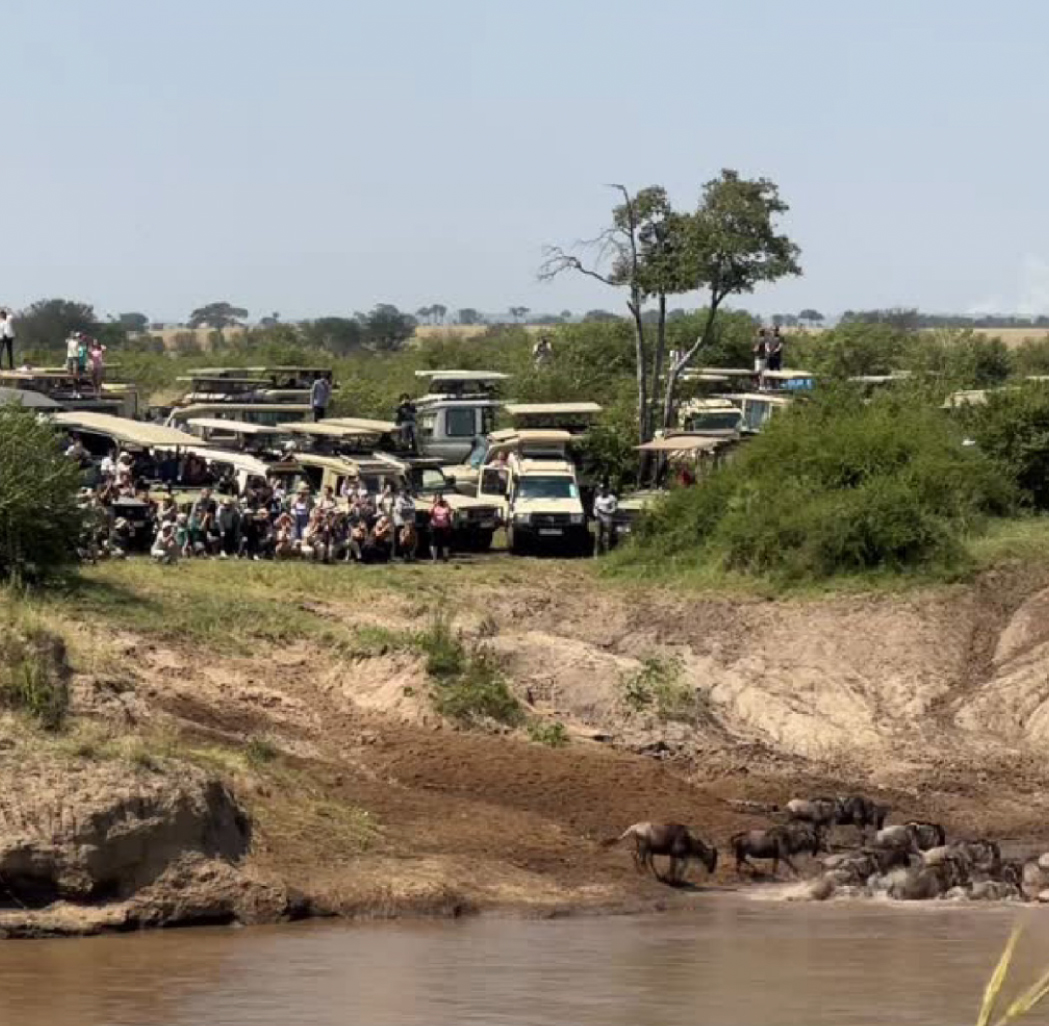Dear Friends and Colleagues,
Recently a huge uproar was brewing over social media about the questionable behavior of the tourists and that of the stakeholders who handle these tourists during game viewing activities in East Africa. It mainly pertained to the great wildebeest & zebra migration between Tanzania and Kenya.
Two of the greatest wildlife sanctuaries the world has ever known are Masai Mara in Kenya and the Serengeti in Tanzania. These two wildlife Reserves are only one ecosystem but shared by two countries due to an invisible man-made boarder. It is within these two ecosystems that the annual wildebeest migration happens. Termed as the ‘greatest show on earth’, millions of wildebeest and zebras, primarily driven by the availability of fresh feed and water, migrate in an almost circular circuit between Tanzania and Kenya. In fact, the 500-mile (800km.) pilgrimage is an ongoing cycle of movement that happens year-round, not only as a natural ecological process that helps rejuvenate the grasslands after the massive herds graze it to the ground but also creating a natural method of sustaining the food supply for the predator population. Contrary to popular belief, lions, leopards and other carnivores don’t migrate with the grazing animals. Instead, they hunt and feast on the grazing animals when their paths cross. The pinnacle is when the wildebeest have no choice but to take a suicidal plunge into the crocodile-infested waters of the Grumeti River and the Mara River, often drowning in their thousands, creating spectacular border crossings. This phenomenon is what the world longs to witness, and what has now become a major problem.

There’s a video circulating showing dozens of safari vehicles swarming the Mara River crossing that has rightly sparked widespread concern. Several social media platforms have had a field day playing the blame game. However, one person has posted a measured response and it’s none other than my good friend and mentor who also happens to be our principal supplier of East Africa Safaris. I’ve known him for over 35 years, and he definitely is not one to mince words. I am taking the liberty to publish relevant portions from his post:
“I do not condone the actions of the driver-guides who flouted park regulations, nor do I excuse the visitors who chose to alight from their vehicles at such a critical and sensitive site. Every stakeholder must be held accountable, from the service providers to the guests themselves.
However, to place blame solely on individual driver-guides misses the deeper, systemic issue – unchecked tourism growth that continues to strain one of the world’s most fragile ecosystems. In the 1980s, when there were far fewer camps and a more measured flow of visitors, scenes of overcrowding were rare. With fewer vehicles in the parks, off-road driving was not a major concern either – the environment had the capacity to regenerate itself naturally. Driver-guides operated with deep respect for the wilderness, and wildlife enjoyed the freedom to behave naturally with minimal interference.
Today, the situation is markedly different. The exponential increase in lodges and bed capacity often sanctioned by administrations prioritising revenue over conservation has turned iconic wildlife spectacles like the Great Migration into congested, chaotic experiences for both animals and guests. The sheer mass of vehicles now converging on key sightings is visibly taking a toll on the landscape and animal behaviour. Adding to the pressure is the growing impact of climate change, which has disrupted long-established migration patterns, altered rainfall cycles, and intensified droughts and floods.
The result is not only stress on the animals but also a more frenzied scramble for viewing among visitors. This is further complicated by the immense pressure placed on driver-guides by visitors who travel thousands of miles at considerable expense and, understandably, expect to see the Big Five and more in their natural habitat, which in turn lead to rule-bending, off-road driving, and crowding that undermines both wildlife conservation and the quality of the safari experience. Simply adding more regulations will not resolve the crisis. What’s needed is not more paperwork but a genuine commitment to enforcing sustainability principles, limiting overdevelopment, and respecting the ecological limits of our natural heritage. Destinations around the world are grappling with the challenges of overtourism. Yet in Africa, we often delay action until outrage erupts on social media. It is time for a fundamental rethink. Only then can we preserve the magic of the Great Migration and safeguard Africa’s wild legacy for generations to come.”
Until next time,
Firdosh

0 Comments